Conducting a Content Gap Analysis That Uncovers Winning Topics
- First, Download Three Templates
- What is Content Gap Analysis?
- Why Care About Content Gap Analysis?
- How to Do Content Gap Analysis
- Map Out the Buyer’s Journey
- Interview Your Loyal Clients and Industry Experts
- Perform Keyword Research
- Review What Content You Have on Your Website
- Analyze Your Competitor's Content
- Connect the Dots
- Conclusion
Conducting a Content Gap Analysis That Uncovers Winning Topics
Click To TweetFirst, Download Three Templates to Do a Better Content Gap Analysis
There’s tons of advice packed into this post, and to make it easier to implement, CoSchedule has included these three templates:- Content Audit Template: Export the URLs on your site. Then, use this template to sort which content to keep, which to discard, and identify missing gaps.
- Customer Journey Mapping Template: Understand your customer’s pain points throughout the buyer’s journey and ensure you have content at each stage.
- Marketing Calendar Template: Plan content at every stage of the funnel in advance.
What is Content Gap Analysis?
Content gap analysis is the process of finding the missing content pieces and topics in the existing media landscape. Some marketers claim that it’s also important to look at what your clients want to consume vs. what the market has to offer.Content gap analysis is the process of finding the missing content pieces and topics in the existing media landscape.
Click To Tweet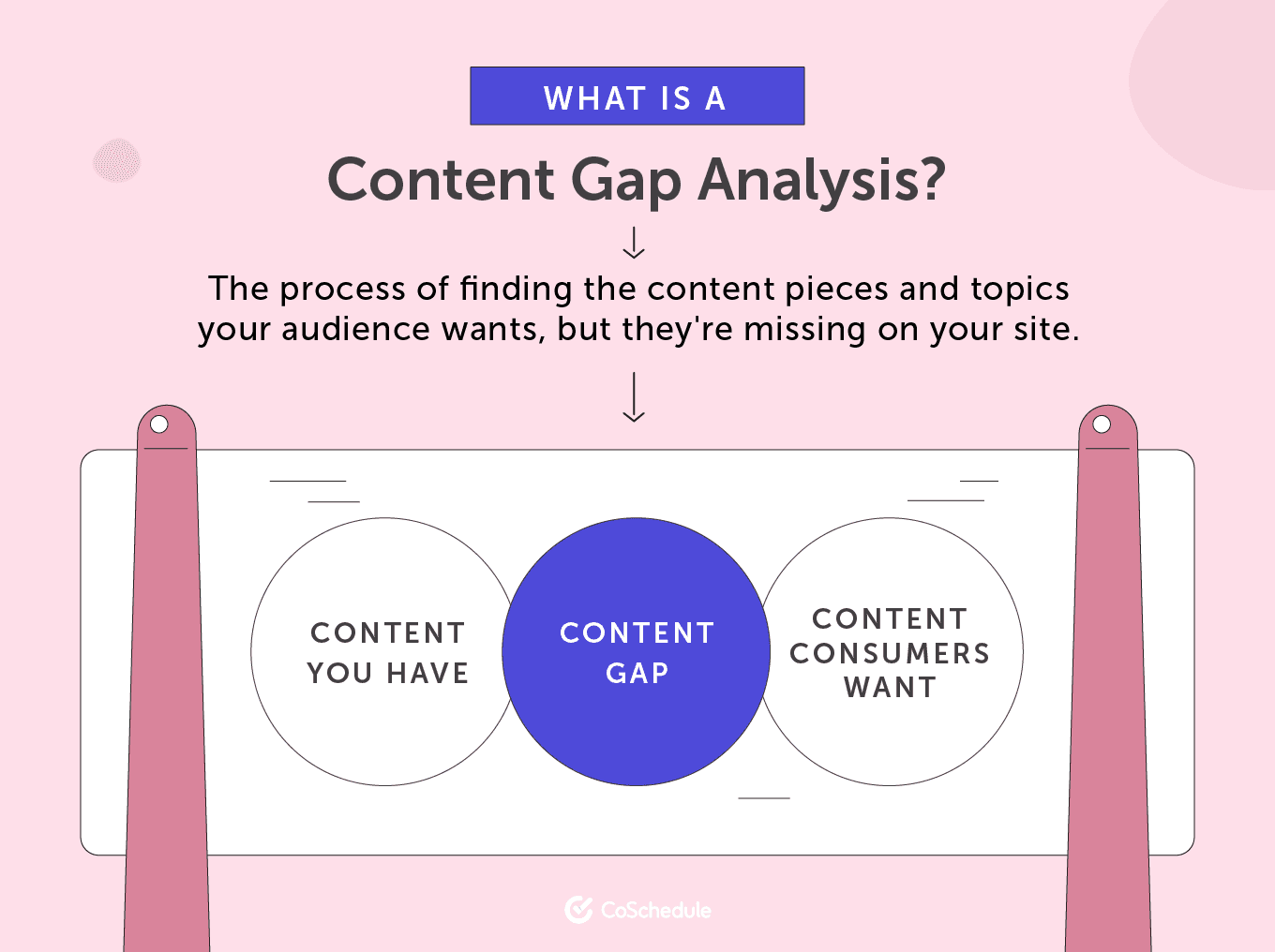 Let me share a quick example.
I’m really into horse-riding and, specifically, dressage. Lately, I was searching for a new horse-riding helmet that would be both safe and good looking.
Let me share a quick example.
I’m really into horse-riding and, specifically, dressage. Lately, I was searching for a new horse-riding helmet that would be both safe and good looking.
- Do the helmets by Kep and Samshield have the same sizing?
- How do I know what size from a particular brand I should take?
- Should the helmet sit tight or rather loose, in terms of safety?
 However, this situation illustrates the most typical mistake of many online stores. An online purchasing process requires content that answers all the same questions that the customer would ask a consultant in an offline shop.
Therefore, if the website fails to provide it, it’s often losing ready-to-act clients.
Content gap analysis allows you to uncover those missed opportunities and help your site visitors convert into clients.
However, this situation illustrates the most typical mistake of many online stores. An online purchasing process requires content that answers all the same questions that the customer would ask a consultant in an offline shop.
Therefore, if the website fails to provide it, it’s often losing ready-to-act clients.
Content gap analysis allows you to uncover those missed opportunities and help your site visitors convert into clients.
Why Care About a Content Gap Analysis?
In content marketing, new methods are popping up here and there all the time, and it can be hard to keep up. Content gap analysis isn’t just another fancy, new technique. It’s an actionable approach allowing you to identify blank spots in your content strategy that don’t allow your customers to move through the funnel. To prove my point, let me show you why content gap analysis is absolutely worth your time. It helps you shift the focus of your content from what you think is important to your audience to what is actually important to them There's a big difference between what you think about your users’ interests and what your users actually think.There's a big difference between what you think about your users’ interests and what your users actually think.
Click To Tweet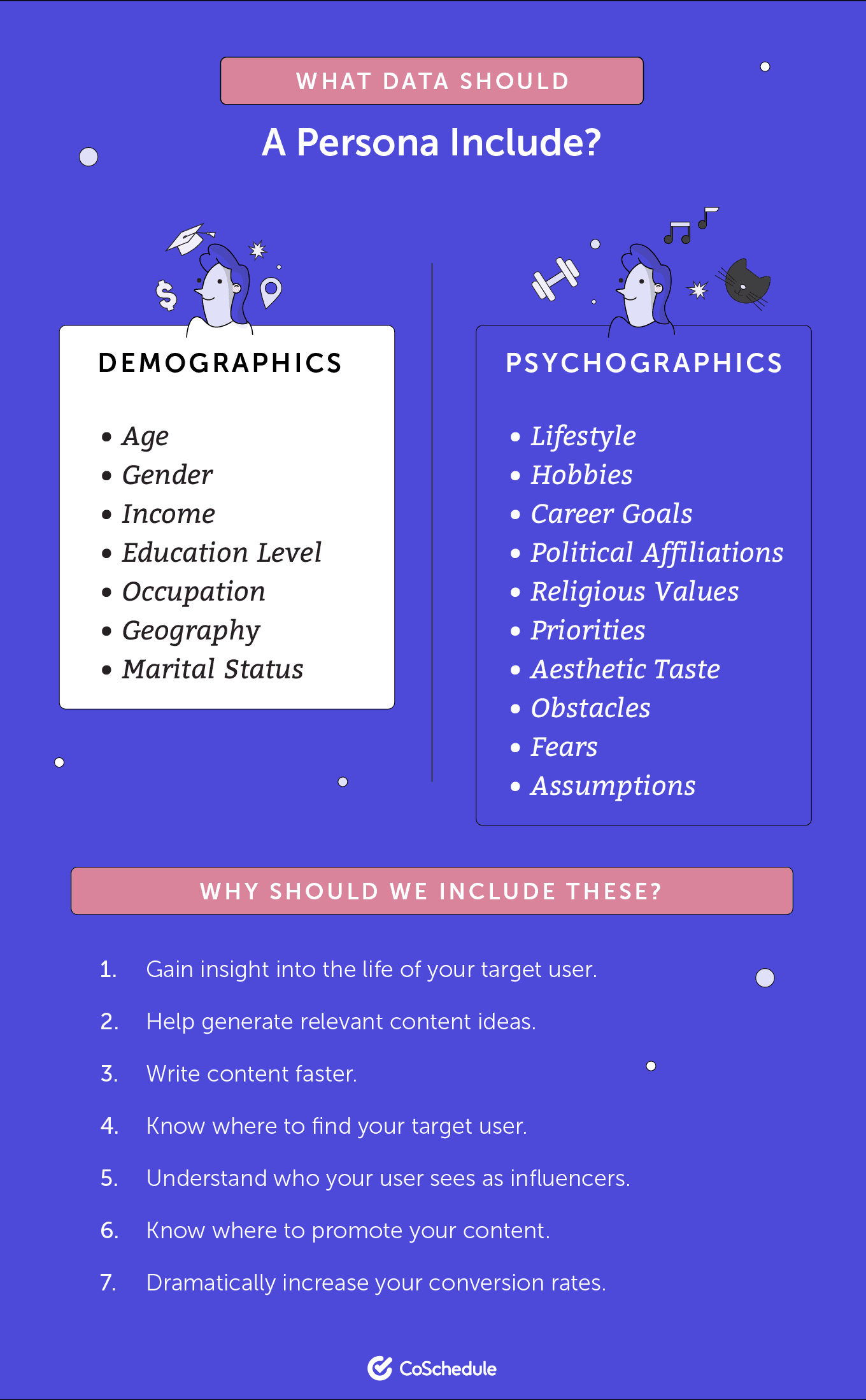 Often, companies that are able to align their content with their users' needs eventually turn into learning hubs. For instance, most digital marketers know that if you’re new to SEO, you should start your learning journey at the Moz blog.
It allows you to establish an effective channel of attracting new customers
We deal with an overwhelming amount of information every day, which is why many of our purchasing decisions are triggered by emotion rather than proper analysis. The right content evokes that emotion and helps companies turn leads into sales.
Often, companies that are able to align their content with their users' needs eventually turn into learning hubs. For instance, most digital marketers know that if you’re new to SEO, you should start your learning journey at the Moz blog.
It allows you to establish an effective channel of attracting new customers
We deal with an overwhelming amount of information every day, which is why many of our purchasing decisions are triggered by emotion rather than proper analysis. The right content evokes that emotion and helps companies turn leads into sales.
The right content evokes emotion and helps companies turn leads into sales.
Click To Tweet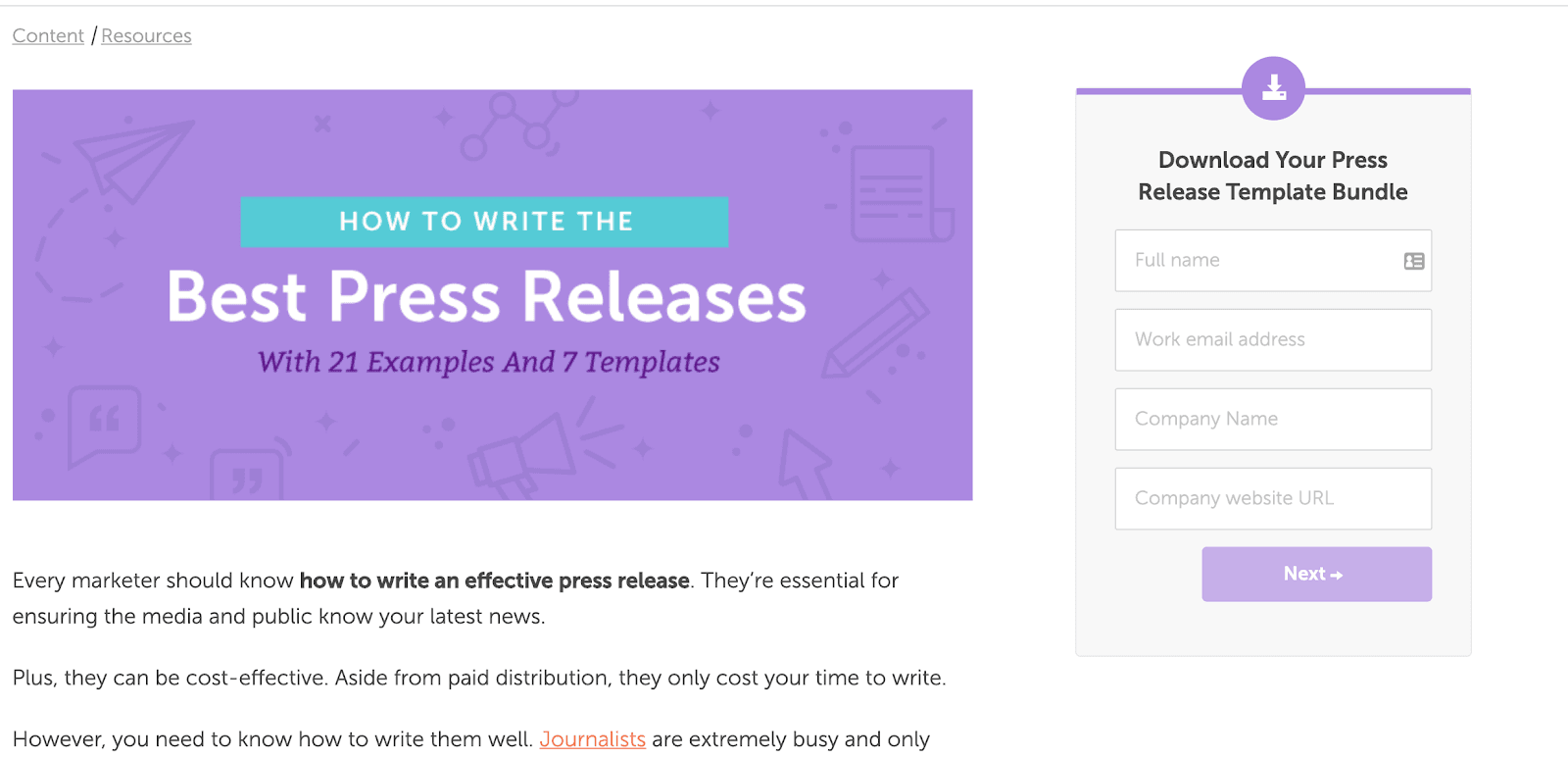 Content gap analysis helps you uncover less competitive sub-niches and take advantage of them
When the niche is oversaturated with content, it’s really hard to stand out.
You can spend hours researching, analyzing, and putting together your next ultimate guide, but if there are ten other guides like this one out there, your efforts will be in vain.
Content gap analysis allows you to identify sub-niches with lower competition. If there’s a shortage of high-quality content on a certain topic or in a certain format, your page would have all chances to rank high in the SERPs.
Content gap analysis helps you uncover less competitive sub-niches and take advantage of them
When the niche is oversaturated with content, it’s really hard to stand out.
You can spend hours researching, analyzing, and putting together your next ultimate guide, but if there are ten other guides like this one out there, your efforts will be in vain.
Content gap analysis allows you to identify sub-niches with lower competition. If there’s a shortage of high-quality content on a certain topic or in a certain format, your page would have all chances to rank high in the SERPs.
How to Do Content Gap Analysis
Now that I have explained to you what gap analysis is and why it is important, let's see how your company can benefit from it. If you feel that any of the steps have already been taken care of, you can always jump to the next one. However, I encourage you to follow them one after another.
Let’s dive in.
If you feel that any of the steps have already been taken care of, you can always jump to the next one. However, I encourage you to follow them one after another.
Let’s dive in.
Map Out the Buyer’s Journey
80% of marketers consider content to be more effective when it is personalized. For that, you need to have an understanding of your ideal buyer’s journey. That is, you need to know how they are moving through the funnel and, in particular, how they are searching for products and services before deciding to make a purchase. Source: https://cdn2.hubspot.net/hubfs/253739/DemandMetric_Content_Personalization_Benchmark_Study_Report_Final.pdf
Apart from this, understanding your buyer's journey will help you create a demand for your product. The companies that were able to capture their potential clients at early stages are in the best position because:
Source: https://cdn2.hubspot.net/hubfs/253739/DemandMetric_Content_Personalization_Benchmark_Study_Report_Final.pdf
Apart from this, understanding your buyer's journey will help you create a demand for your product. The companies that were able to capture their potential clients at early stages are in the best position because:
- They tend to create more effective content marketing funnels that help them capture ready-to-act leads.
- They don’t need to spend their ad budgets on building brand awareness, as they’ve already done it through content marketing.
- High value of their content helps them build authority, credibility, and eventually be perceived as the market leaders.
 Marketing campaigns are only remotely related to email marketing automation. However, Moosend discovered that their potential customers search for examples of marketing campaigns as part of their buyer’s journey.
After the research phase, when users learn more about marketing campaigns in general, they look for channels to run them. This is when Moosend becomes 100% relevant to their demand.
Marketing campaigns are only remotely related to email marketing automation. However, Moosend discovered that their potential customers search for examples of marketing campaigns as part of their buyer’s journey.
After the research phase, when users learn more about marketing campaigns in general, they look for channels to run them. This is when Moosend becomes 100% relevant to their demand.
 Source: https://blog.hubspot.com/sales/what-is-the-buyers-journey
A typical buyer’s journey consists of three stages:
Source: https://blog.hubspot.com/sales/what-is-the-buyers-journey
A typical buyer’s journey consists of three stages:
- Awareness. We realize that we have a particular need, and we are analyzing the landscape.
Clients are looking for content around the issue they are trying to solve.
Click To Tweet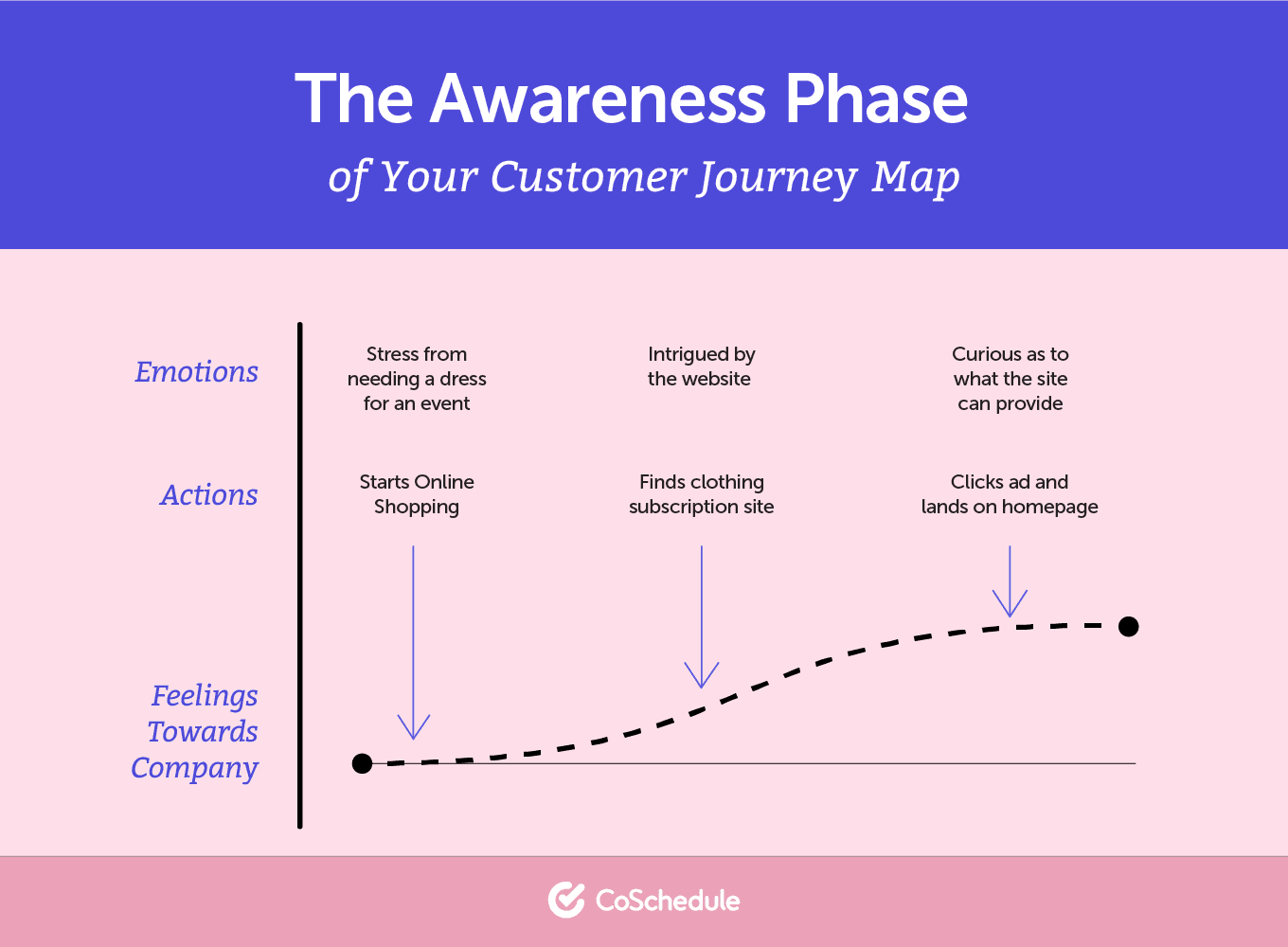
- Consideration. We named our problem and now we’re actively searching for a solution.
- I made a lengthy list of all the tools on the market with the features they offered.
- I have created a criteria list that could help us evaluate each product on a scale from 1 to 10.
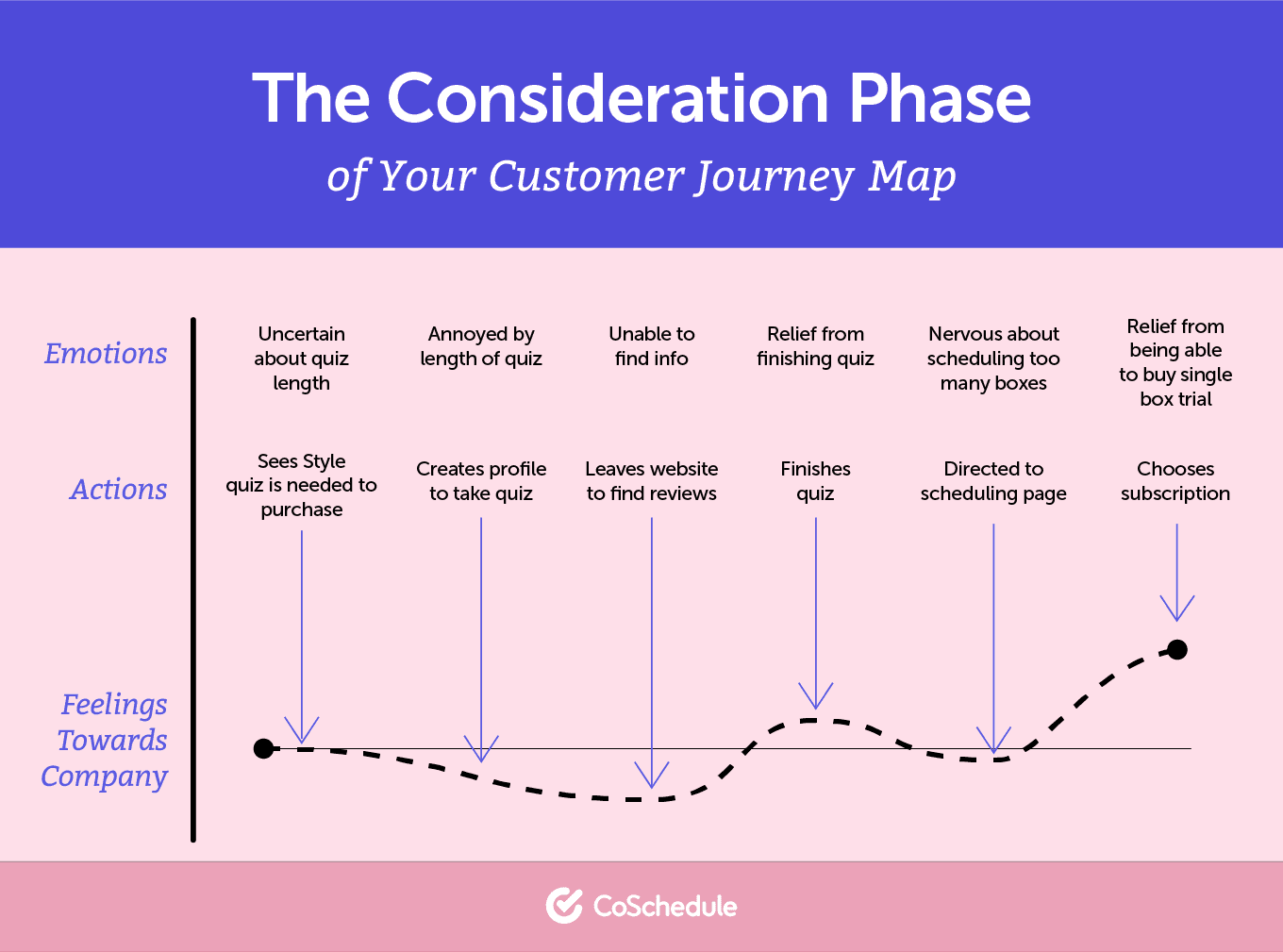
- Decision. We’ve researched the landscape, we picked the solution, and we’re ready to move forward.
 Now, circling back to the story about the SaaS tools.
When assessing the tools, I wasn’t only looking at their features and pricing. I also reviewed businesses testimonials on G2 and searched for content where experts would recommend using those tools.
What I’ve noticed is that having a solid number of brand mentions and active social media presence plays in your favor when users are making their decision.
I believe, for a relatively small company, the only chance to stand out and win over big clients is by demonstrating expertise and showing that you’re a true expert in the field. This is the strategy that we’re following in our agency.
Recently, we’ve delivered an in-depth email outreach guide that helps our potential clients better understand what we do and, more importantly, WHY they should choose us.
The buyer’s journey can be mapped out differently, depending on the type of business you run. Some marketers also distinguish the phase of Interest and Purchase, as users might require specific content at these stages.
Once you have that sorted out, it’s time to move on to the next step.
Now, circling back to the story about the SaaS tools.
When assessing the tools, I wasn’t only looking at their features and pricing. I also reviewed businesses testimonials on G2 and searched for content where experts would recommend using those tools.
What I’ve noticed is that having a solid number of brand mentions and active social media presence plays in your favor when users are making their decision.
I believe, for a relatively small company, the only chance to stand out and win over big clients is by demonstrating expertise and showing that you’re a true expert in the field. This is the strategy that we’re following in our agency.
Recently, we’ve delivered an in-depth email outreach guide that helps our potential clients better understand what we do and, more importantly, WHY they should choose us.
The buyer’s journey can be mapped out differently, depending on the type of business you run. Some marketers also distinguish the phase of Interest and Purchase, as users might require specific content at these stages.
Once you have that sorted out, it’s time to move on to the next step.
Interview Your Loyal Clients and Industry Experts
We’ve identified the stages of your audience’s buyer’s journey. Now, you need to collect insight on how your clients act at each stage, what content they require, and how they move through the funnel. To do that, I recommend conducting a series of surveys using tools like Typeform to collect the answers in bulk. This tool is great because it’s interactive, which makes your surveys more appealing and increases your chances of collecting more answers. Here are the examples of questions that you could be asking:- How do you describe your goals and challenges?
- What kind of data are you looking for to learn more about your goals/challenges?
- How did you come up with the list of possible solutions? Where did you look for information?
- What metrics/criteria do you prioritize above others in the active research phase?
- What pros and cons are you relying on heavily?
 A similar backlink report can be found in tools like Majestic, Moz, CognitiveSEO, and SEMrush.
Another option is to use the BuzzSumo tool, which allows you to see a list of users — including industry leaders and influencers — that have ever shared your content:
A similar backlink report can be found in tools like Majestic, Moz, CognitiveSEO, and SEMrush.
Another option is to use the BuzzSumo tool, which allows you to see a list of users — including industry leaders and influencers — that have ever shared your content:
 Reaching out to people with a request is much more likely to succeed if they’ve been following your work and find what you do worth sharing.
Reaching out to people with a request is much more likely to succeed if they’ve been following your work and find what you do worth sharing.
Perform Keyword Research
Thanks to interviewing your clients, you gained a solid understanding of how exactly your users are searching for your products or services. What you need to do next is use this data to do keyword research and connect the dots (e.g. you need to ensure that your future posts are connected to search marketing demand). In the broadest sense, keyword research is the process of identifying those phrases and combinations of words that people are typing into Google and other search engines.In the broadest sense, keyword research is the process of identifying those phrases and combinations of words that people are typing into Google and other search engines.
Click To Tweet- Discovering how our potential customers interact with the topic (i.e. what kind of language and words they use to explore it).
- Learning how competitive the landscape of these keywords is (i.e. how much effort your company needs to invest into ranking high for these terms).
- Last, but not least, the key search terms we find are the basis of our content strategy.
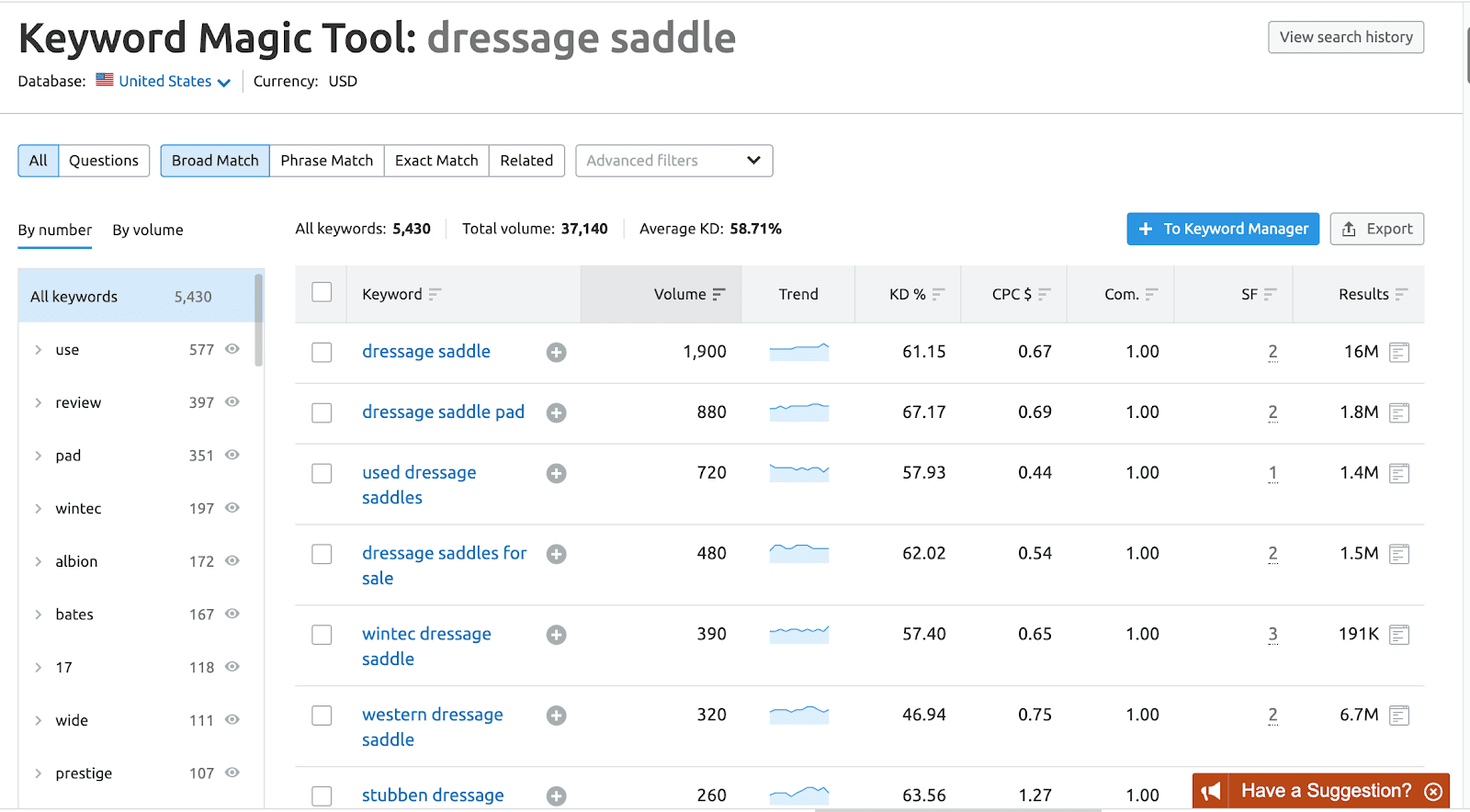 AnswerThePublic is another great option. This tool scrapes automatically Google auto suggest and based on this data it gives you a list of search queries that users are currently searching for.
As you can see in a screenshot below, AnswerThePublic gives you a ready-to-go list of topics that you could start working with:
AnswerThePublic is another great option. This tool scrapes automatically Google auto suggest and based on this data it gives you a list of search queries that users are currently searching for.
As you can see in a screenshot below, AnswerThePublic gives you a ready-to-go list of topics that you could start working with:
 Finally, it’s never a bad idea to review your competitors’ keywords. To make things happen you could utilize either Ahrefs or SEMrush. Both tools have a set of reports that uncover the high-ranking terms of your rivals.
Finally, it’s never a bad idea to review your competitors’ keywords. To make things happen you could utilize either Ahrefs or SEMrush. Both tools have a set of reports that uncover the high-ranking terms of your rivals.
 Performing a keyword research will help you compile a huge list of keywords that you then have to filter out and prioritize.
The next few steps will give you an idea of which topics have the potential to be best-performing.
Performing a keyword research will help you compile a huge list of keywords that you then have to filter out and prioritize.
The next few steps will give you an idea of which topics have the potential to be best-performing.
Review What Content You Have on Your Website
Another milestone in your content gap analysis is to evaluate the type of content you already have on your website.Another milestone in your content gap analysis is to evaluate the type of content you already have on your website.
Click To Tweet Once you have all content pages gathered, you need to check:
Once you have all content pages gathered, you need to check:
- How many posts are aligning with your buyer’s journey.
- How many topics you haven’t yet covered, which have a decent search volume (e.g. what you found during a keyword research stage).
Analyze Your Competitor's Content
Now that we reviewed our existing site content, it is time to get our hands dirty and check how our competitors structure their content. It’s an easy process that anyone can replicate to learn more about the content strategy of their competitors. Here’s how it goes. Step 1: Compile a list of your competitors content pages. To start with, you can use site audit tools to pull a list of your competitors’ content pages. There are plenty of options to choose from, and our good friend Robbie Richards created a round-up post that ranked the best site audit tools, according to 51 experts. Most of the tools are paid, but they also have a limited, free version that you can still use. Another hack is to use BuzzSumo, which can provide you with a list of the published content pages on a particular site. Along with the list of pages, the tool shows your performance of each post on the leading social media platforms and the number of backlinks that a particular article has collected.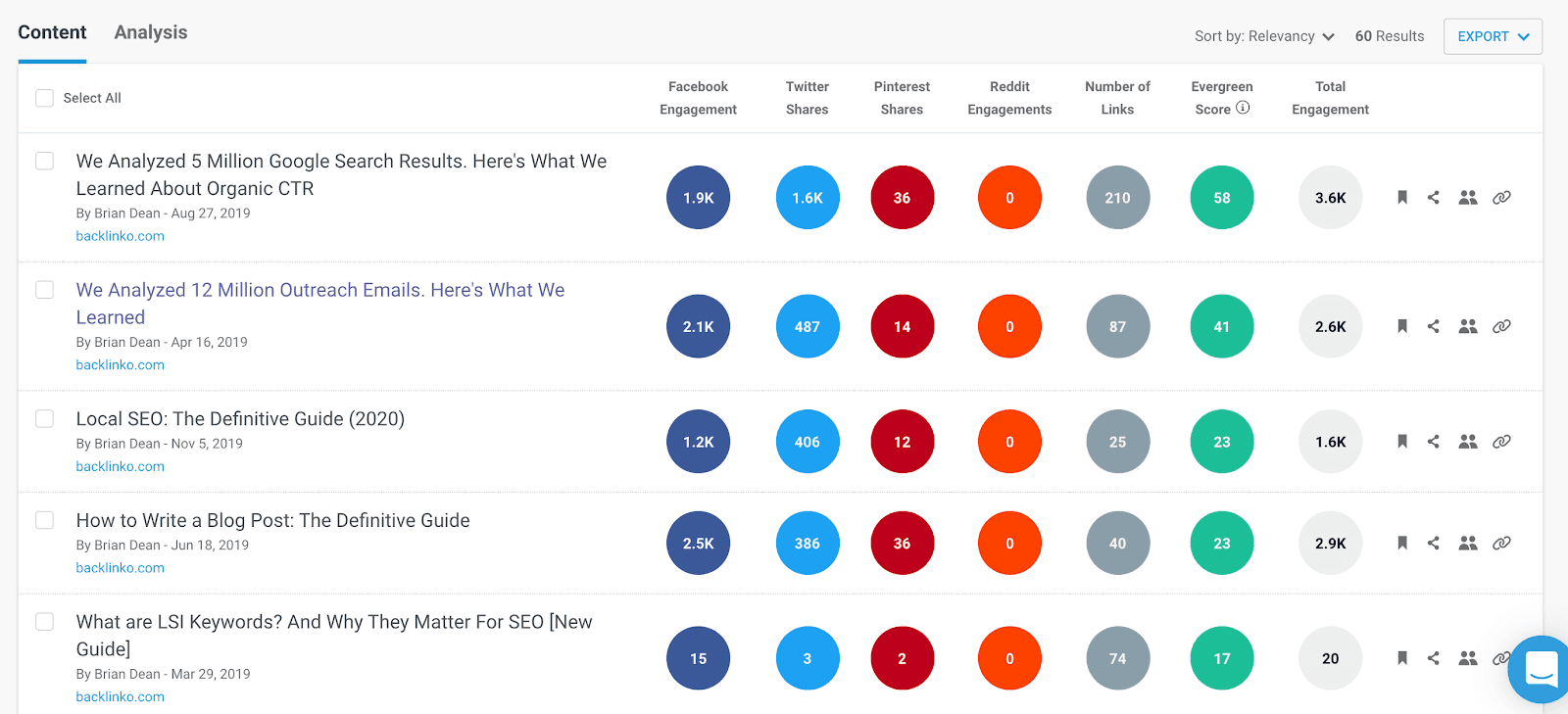 Step 2: Analyze your competitors top-performing content pages
After you’ve put together the list of all content pages published by your rivals, it’s time to identify the best performing ones.
To do that, you can use SEMrush organic research report. It will show you which pages bring the most traffic to their website, its top keywords, and the number of acquired backlinks.
What I find particularly useful is the option to check the same metrics for other countries.
In the example of ContentMarketingInstitute.com, one could also audit the performance in the UK, Canada, etc.
Step 2: Analyze your competitors top-performing content pages
After you’ve put together the list of all content pages published by your rivals, it’s time to identify the best performing ones.
To do that, you can use SEMrush organic research report. It will show you which pages bring the most traffic to their website, its top keywords, and the number of acquired backlinks.
What I find particularly useful is the option to check the same metrics for other countries.
In the example of ContentMarketingInstitute.com, one could also audit the performance in the UK, Canada, etc.
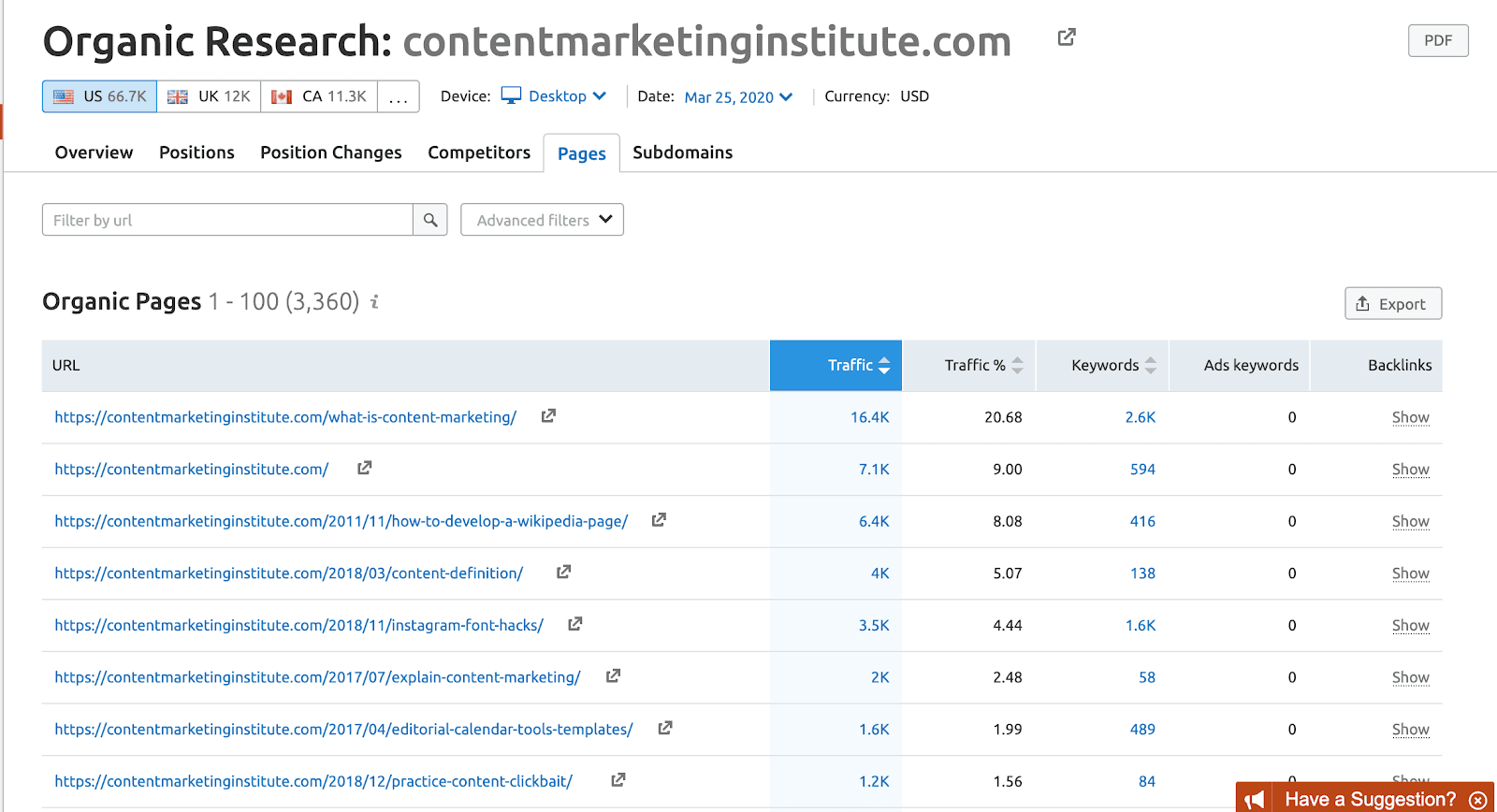
Connect the Dots
Now we are ready to design a killer content strategy. It will be based on analyzing the data that you’ve already gathered by following these steps:- Mapping out the buyer’s journey
- Interviewing your loyal clients and industry experts
- Performing a keyword research
- Reviewing your own content
- Analyzing your competitors content
- Hours you need to invest in creating this content
- Expected time before you get some traction to this content
- Any additional resources you might need to produce it
Avoid — at any cost — publishing something just for the sake of publishing it.
Click To Tweet As you can see, there are plenty of possible topics ideas that you can draw inspiration from.
Another goldmine of ideas is the SERP itself. Simply perform a quick search in Google and see what comes up. Many people underestimate the power of the organic results as a source of ideas, but you shouldn’t follow in their footsteps.
As you can see, there are plenty of possible topics ideas that you can draw inspiration from.
Another goldmine of ideas is the SERP itself. Simply perform a quick search in Google and see what comes up. Many people underestimate the power of the organic results as a source of ideas, but you shouldn’t follow in their footsteps.
 As you can see, there are almost a million Google search results that you can, at least partly, go through to get some inspiration for creating your own content.
Update your content plan.
The last step is to update your content strategy, taking into account all the data you’ve gathered beforehand.
You can use Google spreadsheets to keep track of your publishing schedule and ensure that you create new, relevant pieces regularly.
Of course, apart from publishing, you should also think about promoting and distributing your content via other channels than your blog. You should think of designing a pre-outreach strategy, as well as invest your time and effort into social media and influencer marketing.
Lastly, it’s important that you integrate your content as a part of your sales funnel. That means it serves as a channel for generating leads, as well as converting your visitors into paid customers.
For lead generation, you should consider adding lead magnets and CTAs inside your content to encourage your readers to leave you their email address and add it to your email list.
There are multiple ways to do that.
For example, you could use pop-ups or make a chatbot for your website offering an ebook in an exchange for an email address.
The rule here is simple: Put yourself in the shoes of your potential customers and give them an appealing incentive in exchange for an email list sign up.
Don’t forget to keep your sales and support team informed about your new content pieces, as they can refer more people to check it out.
As you can see, there are almost a million Google search results that you can, at least partly, go through to get some inspiration for creating your own content.
Update your content plan.
The last step is to update your content strategy, taking into account all the data you’ve gathered beforehand.
You can use Google spreadsheets to keep track of your publishing schedule and ensure that you create new, relevant pieces regularly.
Of course, apart from publishing, you should also think about promoting and distributing your content via other channels than your blog. You should think of designing a pre-outreach strategy, as well as invest your time and effort into social media and influencer marketing.
Lastly, it’s important that you integrate your content as a part of your sales funnel. That means it serves as a channel for generating leads, as well as converting your visitors into paid customers.
For lead generation, you should consider adding lead magnets and CTAs inside your content to encourage your readers to leave you their email address and add it to your email list.
There are multiple ways to do that.
For example, you could use pop-ups or make a chatbot for your website offering an ebook in an exchange for an email address.
The rule here is simple: Put yourself in the shoes of your potential customers and give them an appealing incentive in exchange for an email list sign up.
Don’t forget to keep your sales and support team informed about your new content pieces, as they can refer more people to check it out.



